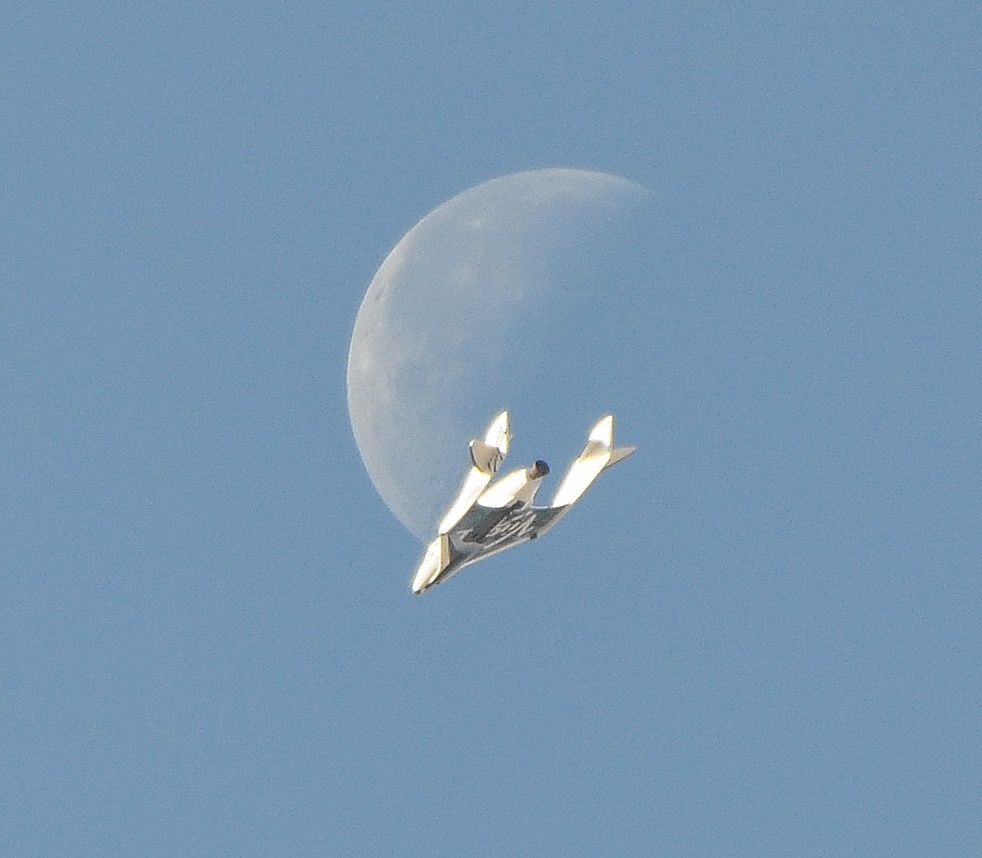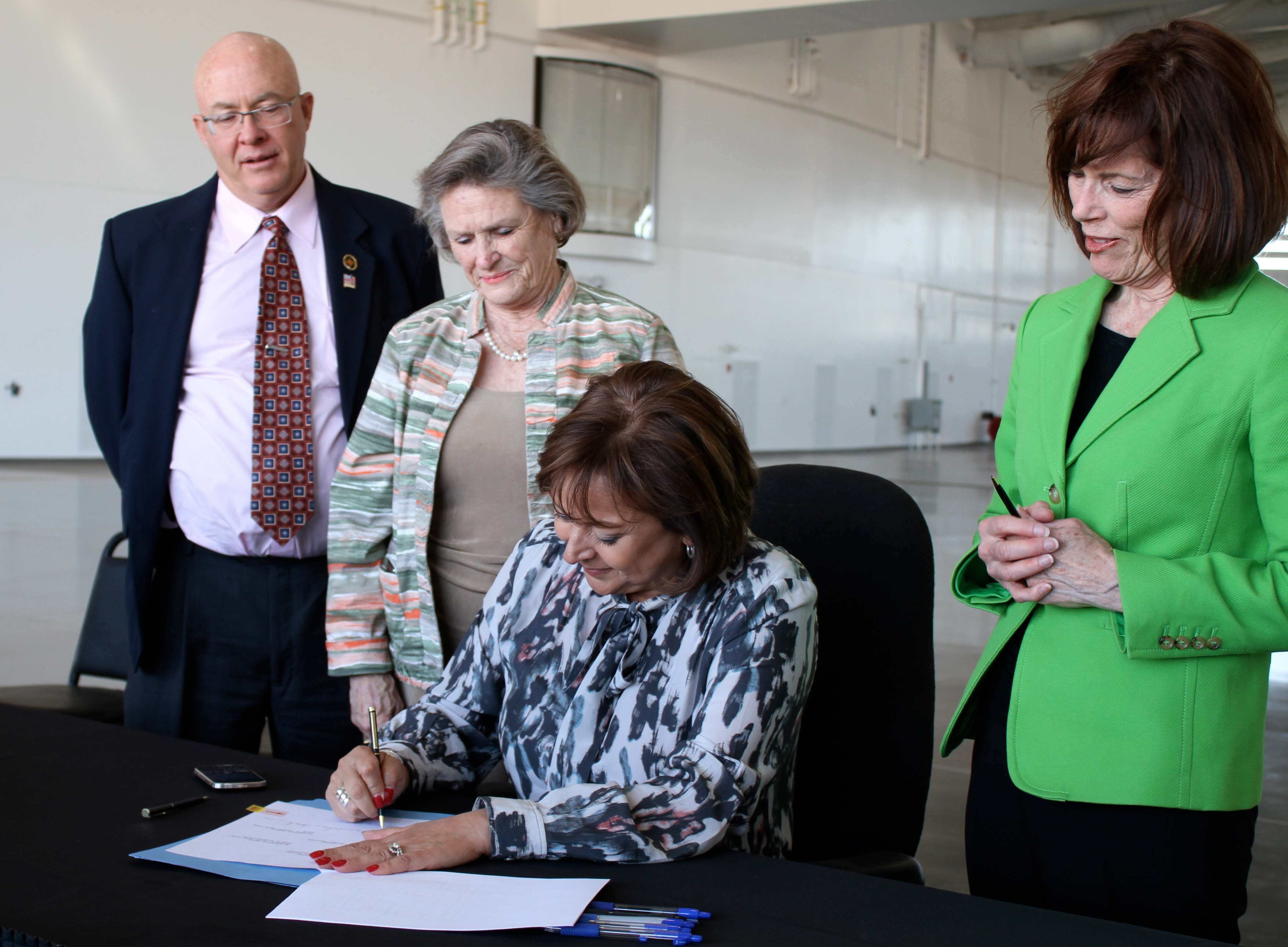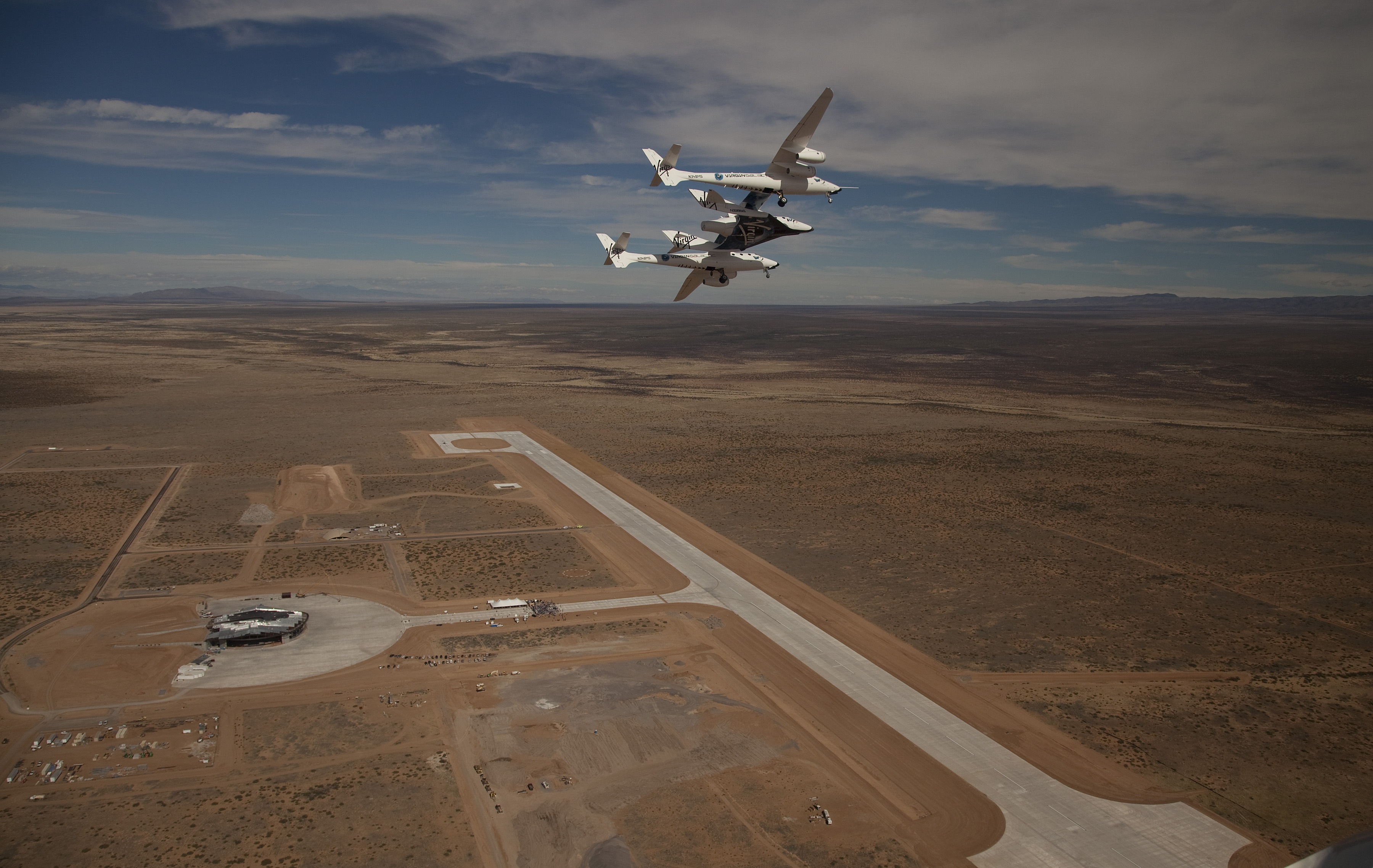
Virgin Galactic's Private SpaceShipTwo Soars in Test Flight

A private spaceship soared through the California sky on Wednesday (April 3) in a flight test meant to pave the way for future passenger trips to space.
Virgin Galactic's suborbital space plane SpaceShipTwo was released at high altitude from its mothership, the WhiteKnightTwo, and glided to the ground in what's called a drop test.
The suborbital SpaceShipTwo touched down at the Mojave Air and Space Port, following a milestone that moves the craft closer to its first hot-engine flight using its hybrid rocket motor.
Important step closer
"The flight went great," said George Whitesides, CEO and president of Virgin Galactic, a spaceliner firm backed by British entrepreneur Richard Branson. [Virgin Galactic's Test Flights Photos]
Scaled Composites' Mark Stucky "did a beautiful job" of piloting the spaceship, Whitesides told SPACE.com, and Virgin Galactic's chief pilot David Mackay performed well as pilot-in-command of the WhiteKnightTwo carrier aircraft, he said.
Scaled Composites, a Mojave, Calif.-based company, is part of The Spaceship Company, which is building Virgin Galactic's WhiteKnightTwo/SpaceShipTwo launch system.
Get the Space.com Newsletter
Breaking space news, the latest updates on rocket launches, skywatching events and more!
"Today's mission included a spaceship feather flight demonstration, which was successful," Whitesides said. SpaceShipTwo's ability to "feather" its tail section, rotating the tail up to a 65-degree angle from the ship's body, is a safety feature designed to increase the drag force on the vehicle as it flies through the atmosphere on its return from the edge of space.
"We also tested components of the rocket motor system," Whitesides said. "The team executed very well throughout and brought us another important step closer to first powered flight."

Succession of tests
SpaceShipTwo's Rocket Motor 2 underwent its twenty-seventh full-scale flight design hot-fire test on March 30, with "all objectives completed," according to a Scaled Composites statement.
The first piloted free flight of SpaceShipTwo took place on Oct. 10, 2010 at Mojave Air and Space Port. The extensive test shakeouts of the space plane and its engine are in preparation for taking paying passengers to the edge of space, with commercial flights slated to start from New Mexico's Spaceport America.
The passenger ticket price for a SpaceShipTwo suborbital trek is $200,000. These private spaceflights wouldn't make a full orbit of Earth, but would provide a few minutes of weightlessness and a view of Earth from the blackness of space.
Bill Deaver, veteran Mojave Air and Space Port tarmac watcher, said SpaceShipTwo glided to its landing at 8:40 a.m. PST.
"The flight followed the usual pattern with the drop and glide preceded by a fuel dump from the spaceship," Deaver told SPACE.com. "The weather was perfect and the wind was blowing out of the east, which meant that when the spaceship slid to a stop on its landing gear and wooden nose skid, the handful of spectators got a whiff of burnt wood."
Deaver captured an amazing photo of SpaceShipTwo gliding back through the air with the moon in the background with his Nikon D90 camera and Tamron 18-250 lens.
"I've been trying to get that shot for some time and this morning the 'stars' lined up just right!" Deaver said.
Legal boost
Meanwhile, New Mexico's Spaceport America got a boost April 2 in readying itself to handle commercial space operations — such as suborbital flights of Virgin Galactic SpaceShipTwo.
Following unanimous passage by the state's legislature, New Mexico Gov. Susana Martinez signed legislation to expand existing liability protections for spaceflight operators to spaceflight manufacturers and suppliers.
Called the New Mexico Expanded Space Flight Informed Consent Act, the bill prevents lawsuit abuse and addresses the inherent risks of spaceflight.
Building on existing legislation passed in 2010 — which covered only spaceflight operators like Virgin Galactic — the new law provides coverage to both operators and their supply chain during the critical early years of the industry's development.
The bill still allows legal options for spaceflight participants in cases of willful, wanton or reckless disregard, but enables New Mexico to more successfully recruit and retain commercial space tenants and customers for human spaceflight operations at Spaceport America.

Prevent lawsuit abuse
Martinez said the legislation will prevent lawsuit abuse and make it easier for businesses related to the space travel industry to thrive and succeed in New Mexico.
"This is an important day for the future of commercial spaceflight in the state of New Mexico," said Virgin Galactic's Whitesides. "This bill, S.B. 240, will significantly improve the competitiveness of Spaceport America and help create jobs for New Mexicans. The signing of this bill by Governor Susana Martinez represents a vital milestone for commercial spaceflight in the state," he said in a statement.
"The passage of this expanded liability protection bill is extremely important to the future of New Mexico's space leadership position in the commercial space industry," said Christine Anderson, New Mexico Spaceport Authority (NMSA) executive director.
"We already have a great facility with exceptional services for our customers, but with this additional protection enacted, we are on a par with other states with similar legislation," Anderson told SPACE.com. "We can now get back to the business of building the commercial space industry in New Mexico. I would also like to emphasize that Spaceport America is open for business."
Spaceport America is the first purpose-built commercial spaceport in the world. It is situated in Upham, N.M., on 18,000 acres adjacent to the U.S. Army's White Sands Missile Range.
The NMSA continues to work closely with Virgin Galactic. In 2008, it signed a 20-year lease with the spaceliner firm for the spaceport's main terminal hangar facility. Other firms making use of Spaceport America are Lockheed Martin, Moog-FTS, and UP Aerospace and their customers — NASA and the Department of Defense.
Leonard David has been reporting on the space industry for more than five decades. He is former director of research for the National Commission on Space and is co-author of Buzz Aldrin's new book "Mission to Mars – My Vision for Space Exploration" out in May from National Geographic. Follow us @Spacedotcom, Facebook or Google+. Originally published on SPACE.com.
Join our Space Forums to keep talking space on the latest missions, night sky and more! And if you have a news tip, correction or comment, let us know at: community@space.com.

Leonard David is an award-winning space journalist who has been reporting on space activities for more than 50 years. Currently writing as Space.com's Space Insider Columnist among his other projects, Leonard has authored numerous books on space exploration, Mars missions and more, with his latest being "Moon Rush: The New Space Race" published in 2019 by National Geographic. He also wrote "Mars: Our Future on the Red Planet" released in 2016 by National Geographic. Leonard has served as a correspondent for SpaceNews, Scientific American and Aerospace America for the AIAA. He has received many awards, including the first Ordway Award for Sustained Excellence in Spaceflight History in 2015 at the AAS Wernher von Braun Memorial Symposium. You can find out Leonard's latest project at his website and on Twitter.









